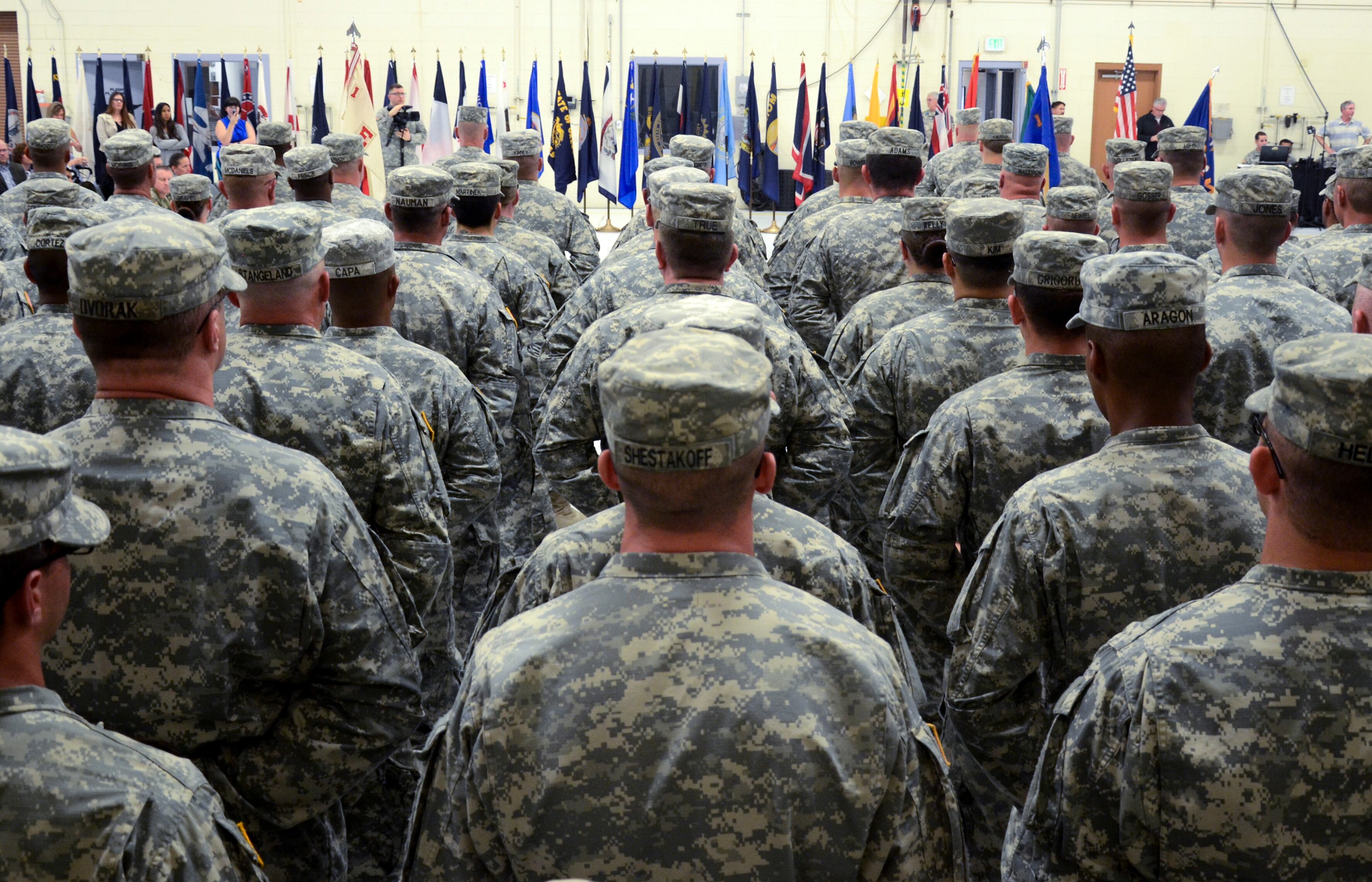The Pentagon on Tuesday will unveil a $583 billion budget request for 2017 that seeks a modest pay raise for service members, new adjustments to the future military retirement system and familiar — if unpopular — changes to the military health care system, according Defense Department documents slated for official release Tuesday afternoon.
The budget request for fiscal year 2017, which begins Oct. 1, also outlines incremental reductions for the global active-duty force as well as deployment of more than 6,000 troops to Afghanistan and about 3,550 troops to Iraq.
The request for a 1.6 percent pay raise would fall below the official uptick in civilian-sector wages, marking the fourth consecutive year that the Defense Department has sought to cut long-term costs by curtailing the growth in basic pay.
The 1.6 percent raise in basic pay, if approved by Congress, would take effect in January 2017. It falls a half percentage point below the default raise of 2.1 percent, which is pegged to the recent Employment Cost Index, a government metric that tracks the rise in private-sector pay.
The 1.6 percent raise penciled in for next year is higher than the 1.3 percent bump that troops received this year.
Overall, the budget request formally sent to Capitol Hill contains few surprises for military personnel accounts and reiterates the Pentagon's priorities and stated plans from the past several years. Total spending on military personnel would remain essentially flat at $135 billion.
While the details are subject to change before it becomes law, the total budget of $583 billion tracks with a broader spending agreement that lawmakers reached last year so it may avoid the partisan battles over top-line spending that have become common since the budget caps known as sequestration took effect in 2013.
The budget proposal is asking Congress to make some key changes to the sweeping military retirement reform that became law last year. The Pentagon supports the fundamental changes that will shrink military pensions for future troops by 20 percent yet also offer cash contributions to individual investment accounts for all troops regardless of whether they serve a full 20-year career.
But defense officials are asking for "modifications now to ensure that, when the new system goes into effect [in January 2018], it best meets the retention needs of the services and our men and women in uniform," according to budget documents obtained by Military Times.
Those proposed changes include:
- Raising the current cap on government contributions to individual investment accounts to 6 percent of basic pay. Current law limits that to 5 percent.
- Delaying the start of government matching contributions to individual investment accounts to the fifth year of military service. The current law begins matching contributions at the third year of service.
- Extending the government’s matching contributions to an individual service member's actual retirement date. Current law cuts off government matching contributions at 26 years of service.
- Removing the new retirement system’s mandatory minimum continuation pay for all troops reaching 12 years of service, and giving each of the services flexibility to set continuation pay based on their individual needs. Current law ensures that all troops reaching 12 years of service receive continuation pay equal to 2.5 months basic pay.
The Defense Department also is asking Congress to approve changes to the military health care system, a move many experts believe will become a focus for Congress as it looks to continue reducing military personnel costs.
The new budget seeks to add some new fees for military troops and families that see doctors in the civilian sector. That's designed to incentivize the use of less-costly military health care facilities.
And the budget request seeks a new law reorganizing the current Tricare health benefit into two programs: Tricare Select, a health maintenance program like Tricare Prime that is limited to military hospitals; and Tricare Choice, an unmanaged care option like Tricare Standard but with higher fees for many.

Soldiers with the Army's 1st Battalion, 168th Aviation Regiment, participate in a deployment ceremony, Oct. 4 for their deployment early next year to the Middle East.
Photo Credit: Spc. Danielle Gregory/Army
Also under next year's proposed budget, the total size of the force is slated to drop by almost 20,000 troops — leaving an active-duty force of 1.28 million service members. That's down almost 10 percent from a peak of 1.42 million in 2010, defense department data shows.
Among those troop reductions would be some 15,000 soldiers, reflecting the Army's previously announced plans to continue its drawdown from about 475,000 this year to 460,000 next year. The Army's long-term plans call for reducing the size of its force to 450,000.
The Navy would cut about 4,400 sailors, bringing its total size down to about 333,000 for 2017. The size of the Air Force and Marine Corps would remain unchanged under the 2017 budget request.
The budget offers some insight into plans for overseas deployments. It pencils in a force level of about 6,217 troops for Afghanistan, reflecting current goals to keep force levels near 10,000 into the fall and reduce them to 5,500 by January 2017.
And the budget plans for about 3,550 troops in Iraq, slightly fewer than the current authorized force of about 3,800.
The budget request also includes a significant spike in spending for an "increased presence" in Europe, primarily in response to Russian aggression and an effort to reassure European allies. That will include an increase in rotational forces in the U.S. European Command, but the precise number of troops remains unclear.
Andrew Tilghman is the executive editor for Military Times. He is a former Military Times Pentagon reporter and served as a Middle East correspondent for the Stars and Stripes. Before covering the military, he worked as a reporter for the Houston Chronicle in Texas, the Albany Times Union in New York and The Associated Press in Milwaukee.





